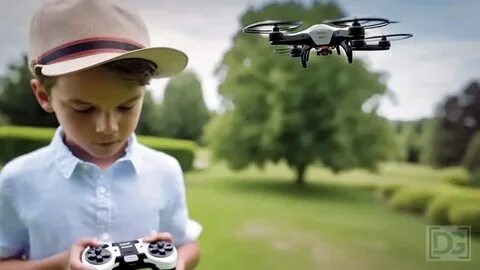Children are naturally curious about flying toys, and the DJI drone is one of the most advanced yet user-friendly options available in the Canadian toy market. Unlike traditional remote-control helicopters, drones allow kids to experience smooth flying, aerial photography, and interactive learning. Parents, however, often wonder whether these drones are suitable for children and how to pick the right model that balances safety, ease of use, and fun.
Factors Parents Should Consider Before Buying a DJI Drone
Age Appropriateness and Safety Features
Not every DJI drone is suitable for all age groups. For children under 10, smaller and lighter drones with propeller guards are safer. Models that include auto-hovering and obstacle avoidance reduce the risk of crashes. Parents should also ensure drones have low-speed modes that allow kids to practice without losing control.
Durability and Build Quality
Kids often play with toys in a less careful way than adults. A DJI drone for children should be durable enough to withstand light crashes. Models with flexible propellers, reinforced frames, and easy-to-replace parts are better choices. Investing in a robust drone reduces long-term costs since you will not have to replace it frequently.
Flight Time and Battery Life
One of the most common frustrations among young users is short flight time. Children may lose interest quickly if the battery only lasts a few minutes. Look for a DJI drone that offers at least 15–20 minutes of flying per charge. Buying extra batteries is also a smart idea for extending playtime.
Ease of Use and Beginner Modes
A DJI drone should be simple for kids to learn. Features like one-button takeoff, auto-landing, and headless mode help beginners fly without confusion. Some models even come with smartphone apps that guide kids through tutorials and flight challenges.
Safety Regulations in Canada
Transport Canada has specific rules for drones depending on their weight and use. Parents need to check whether the DJI drone their child wants falls under basic drone regulations. For kids’ drones weighing under 250 grams, registration and pilot certification are not required, making them more convenient for family use.
Best DJI Drone Models for Kids in Canada
DJI Tello – The Beginner-Friendly Option
The DJI Tello is often recommended for children. It is lightweight, safe, and affordable, with a flight time of around 13 minutes. The Tello can be controlled through a smartphone and even allows kids to learn simple coding through Scratch programming, making it both fun and educational.
DJI Mini 2 SE – A Step Up for Older Kids
For older children or teenagers, the DJI Mini 2 SE offers more advanced features such as higher resolution cameras, stronger stability, and longer flight times. At just under 249 grams, it does not require registration in Canada, making it easy for families.
DJI Mini 3 – For Kids Interested in Aerial Photography
If your child has a strong interest in capturing photos or videos, the DJI Mini 3 provides high-quality image stabilization and longer flight endurance. While slightly more advanced, it remains user-friendly with intelligent flight modes suitable for teens.
Educational Benefits of Introducing a DJI Drone to Kids
Developing STEM Skills
A DJI drone can teach children problem-solving, spatial awareness, and even basic coding. By flying and experimenting, kids gain practical knowledge of physics and aerodynamics.
Encouraging Outdoor Activities
In an era where screens dominate free time, a DJI drone motivates kids to go outdoors, explore parks, and spend more time in physical activities while learning.
Enhancing Creativity and Storytelling
Children interested in photography or filmmaking can use a DJI drone to capture creative videos. This opens doors to digital storytelling and even future career skills in media and technology.
Tips for Parents to Ensure Safe Drone Flying
Establish Safe Flying Zones
Kids should not fly drones near roads, airports, or crowded areas. Parks and wide open fields are the safest environments. Parents should supervise flights until children are fully confident.
Teach Responsible Drone Use
Before letting kids fly independently, explain the importance of respecting privacy, wildlife, and community rules. Responsible use helps kids understand technology with a sense of responsibility.
Invest in Extra Accessories
Having spare propellers, propeller guards, and additional batteries ensures kids get a smoother experience without interruptions. Accessories also reduce frustration during accidents.
Common Mistakes Parents Should Avoid
Buying a Drone That Is Too Advanced
If a drone has complex controls, children may become frustrated and lose interest quickly. Start simple and upgrade later as your child’s skills grow.
Ignoring Canadian Drone Laws
Even small drones come with safety guidelines. Parents should stay updated with Transport Canada’s drone rules to avoid fines or legal issues.
Overlooking Warranty and Support
Children are likely to damage drones during learning. Buying from authorized DJI dealers in Canada ensures access to warranty and spare parts when needed.
Final Thoughts on Choosing the Right DJI Drone for Your Child
A DJI drone can be more than just a toy—it can be an educational tool, a source of family bonding, and a way to spark creativity. The key for parents is to balance fun with safety, ensuring the drone matches their child’s age, interests, and skill level. By starting with beginner-friendly models and supervising flights, parents can provide a safe yet exciting experience that helps children explore technology in a responsible way.

